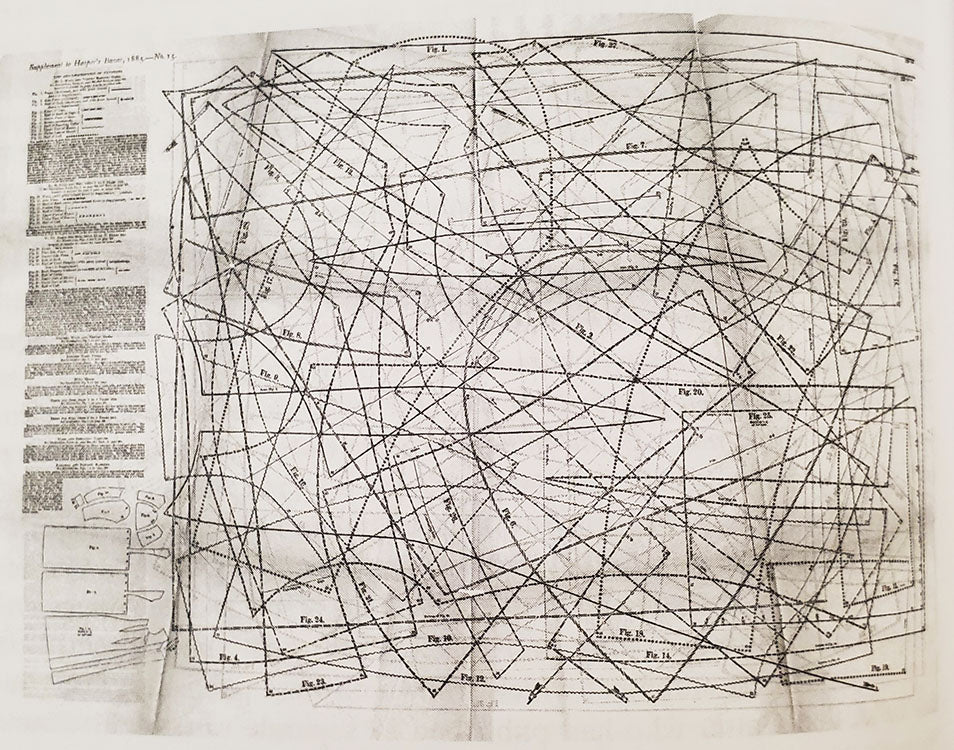As the hand knitting industry begins efforts to become more inclusive, some are asking if it’s more appropriate to use fixed ease or proportional ease when grading. I’m here to tell you this is a false choice. One is not better or more accurate than the other, they have totally separate use cases. You may even use both methods in a single garment.
I’m going to explain the difference between fixed and proportional ease and give examples of acceptable uses for each.
With fixed ease, we give all sizes the same amount of ease. For example, all finished chest measurements are 4”/10 cm larger than the body. Whereas relative/proportional ease uses a percentage of the body measurement to determine the finished garment measure. Let’s say I have a sample meant to fit a 45”/112.5 cm chest and I give it 11% positive ease. The finished measurement will have 5”/12.5 cm ease. A 30”/75 cm chest will get 3.25”/8 cm positive ease, and a 60”/150 cm chest gets 6.75”/17 cm positive ease).
I’ve seen a few people try to make the case that it is better to grade using proportional ease exclusively, especially when designing for larger bodies. I couldn’t agree less. As you can see from my example, these will result in wildly different fits between the smallest and largest sizes. Generally, a garment with up to 4”/10 cm is considered a “standard” fit. A garment with +6” ease is considered oversized. So, in this example, as the sizes increase, the silhouette slowly morphs from a “standard” fit to an oversize fit.
The goal of grading is to recreate the same fit at every size. Clearly, proportional grading is not working in this situation. In fact, I would say most of the time it’s not appropriate at all and fixed grading is the way to go. There are two ways to think about garments and how they interact with the body: we can think of the space between the body and the garment and how that facilitates motion/comfort, or we can think of the amount of fabric and how it lays on the body. Most of the time, it’s that space which is most important. Think of fixed ease as giving everyone the same amount of clearance between their bodies and the garment. This gives everyone a common starting point for making. Knitters can easily interpret size charts to choose the size that works best for them and plan alterations knowing that the ease is even across the range.
When using proportional ease, we’re more worried with how much drape there is so the fabric can flow or gather properly. Proportional grading is best saved for when you are making ruffles or designing something extremely oversized. It’s perfect for ruffles because the density of the gather is determined by the percentage that the fabric is decreased. To get a 2:1 gather ratio, you need to start with 2x the fabric to gather at every size. For extremely oversized silhouettes, like Joji’s Boxy, proportional ease is a great tool to make sure the larger sizes look just as drapey as the smaller ones.
As you can see, choosing the right method means understanding the intent of the garment. The correct method will give you visually consistent results across the size range.
Hopefully my descriptions have helped you see the difference between both approaches. If you enjoyed reading this and want to learn more about pattern grading, consider signing up for A Masterclass On Grading. Sarah Walworth, Melissa Metzbower, and I put together this super comprehensive guide to everything you ever needed or wanted to know about grading knitwear. We open enrollment 4 times a year, so sign up for the email list to be notified when registration opens again. You get access to a private group of awesome people dedicated to learning about grading and making the hand knitting industry more inclusive, we do exclusive live chats, and we have some great resources included with your purchase like ASTM size charts a guides from established fashion brands.

